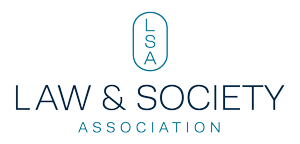LAW & SOCIETY REVIEW
VOLUME 59 | NUMBER 2
June 2025
Articles
Introduction to the special issue on empirical methods and critical race theory
Author
Abstract
Critical Race Theory (CRT) can be understood as an attempt to examine how race and racism are central rather than peripheral to law and legal thinking. Rather than viewing the long and ongoing story of race in American law as a series of unfortunate aberrations to an otherwise fair and impartial legal system, CRT sees racial subordination and the marginalization of other disempowered groups as foundational to how law and democracy are organized and function in society. With this intervention comes other commitments such as rejecting law’s presumed neutrality; a dissatisfaction with traditional Civil Rights approaches to racial equality; understanding how identity traits such as race and sex intersect and constitute one another; and taking the inherently political nature of legal scholarship seriously (Crenshaw et al. 1995). This framework has been both widely celebrated and consistently attacked since its emergence in the 1980s by people both inside and outside the academy (Rosen 1996). In many ways, CRT is the proverbial millennial that seems forever young but, in reality, is now middle aged.
What Is Perceived When Race Is Perceived and Why It Matters for Causal Inference and Discrimination Studies
Author
Abstract
Quantifying the causal effects of race is one of the more controversial and consequential endeavors to have emerged from the causal revolution in the social sciences. The predominant view within the causal inference literature defines the effect of race as the effect of race perception and commonly equates this effect with “disparate treatment” racial discrimination. If these concepts are indeed equivalent, the stakes of these studies are incredibly high as they stand to establish or discredit claims of discrimination in courts, policymaking circles and public opinion. This paper interrogates the assumptions upon which this enterprise has been built. We ask: what is a perception of race, a perception of, exactly? Drawing on a rich tradition of work in critical race theory and social psychology on racial cognition, we argue that perception of race and perception of other decision-relevant features of an action situation are often co-constituted; hence, efforts to distinguish and separate these effects from each other are theoretically misguided. We conclude that empirical studies of discrimination must turn to defining what constitutes just treatment in light of the social differences that define race.
When turnips bleed: the racial duality of predatory ticket debt
Author
Abstract
How do sociolegal scholars who liken monetary sanctions to “bleeding a turnip” or “drawing blood from stones” reconcile these idioms with the fact that fines and fees constitute a growth industry? We take up this puzzle by turning our attention to perhaps the most relatable experience with monetary sanctions among the population: parking tickets. Much of the available law and society literature on fines and fees documents how these sanctions disproportionately impact communities subjugated by race and class. Because parking tickets are adjudicated within a legal domain so fundamentally different from fines and fees that dominate the academic focus, we ask whether these insights extend outside criminal counts to municipal ones. Using Chicago as a case study, our inquiry measures the structural determinants of 11.3 million tickets issued between 2013 and 2017. We use a series of count models to predict the incidence rates of tickets at the tract level as well as how many were subject to reprimands for nonpayment. What we find are disparate patterns of racialization in terms of who is targeted by these sanctions versus who is devastated by them. We synthesize key ideas from empirical critical race theory and developing work on predation theory to make sense of these findings.
Academic Copaganda
Author
Robert Vargas, David Hackett, Sebastian Ortega, Elena Smyslovskikh and Federico Dominguez-Molina
Abstract
How does social science insulate police from social movements’ demand for abolition? We explore this through a content analysis of policing social science research funded by Arnold Ventures, the MacArthur Foundation, and the National Institute of Justice published from 2011 to 2022 (N = 143 studies). Our mixed method content analysis revealed what we call “Academic Copaganda,” or studies contesting social movement claims by authors (1) masking their conflicts of interest, or (2) espousing police epistemology. Although Academic Copaganda comprised 20% of studies in the sample, they received most media mentions after the 2020 police killing of George Floyd. We conclude by discussing our contributions to legal scholarship on police legitimacy and empirical critical race theory.
Abstract
Using 60 interviews with a range of minority law students and early career legal professionals (primarily differentiated by race, gender identity, religion, and disability), this Article illuminates the cruciality of empirical Critical Race Theory to understand individual deviance within the legal profession and develops a framework – blasé – for considering interactional violence that is not legally or socially cognizable as discrimination but still causes harm. These data reveal that discrimination was minimized and denied to varying degrees for all minority respondents. However, for genderqueer respondents whose identities had not achieved a high degree of sociolegal legibility, these denials had low contestability and were often without contrition. Unlike microaggressions which might have resonance in common cultural parlance as operationalizations of structural violence, what distinguishes blasé discrimination, I argue, is the ordinariness of the act in interactional parlance alongside its relative unlikeliness to be seen as problematic when confronted. It is this possibility of defense and justification in the face of being challenged that makes blasé and its ambiguous parameters worthy of our attention in identity jurisprudence. This exploration of the blasé response to discrimination sheds light on the opportunities available for revealing structural inequalities when analysis begins from the perspectives of peripheral actors.
Challenging the Indian Child Welfare Act: colorblind racism, whiteness as property, and the legal architecture of settler colonialism
Author
Abstract
Bringing critical race theory and settler colonial theory to bear on legal mobilization scholarship, this article examines the ongoing campaign to strike down the 1978 Indian Child Welfare Act (ICWA). ICWA sought to end the forced removal of American Indian children from their tribes. If successful, the challenges to ICWA’s constitutionality stand to undermine tribal sovereignty writ large. Drawing on a content analysis of documents from 17 major court cases (2013–2023) and a unique dataset of public-facing documents from the leading ICWA challengers, I interrogate the argumentative architecture of this legal mobilization. I find that the campaign to strike down ICWA is structured around three ideological maneuvers: erasure, settler normativity, and reclassification. These maneuvers scaffold a fourth – colorblindness – and the claim that ICWA is an unconstitutional race-based statute. I show how ICWA adversaries use these ideological maneuvers to legitimate white possession of Indigenous children and delegitimize tribal sovereignty. While existing work tends to treat colorblind racism and settler colonialism as analytically distinct, these findings shed light on the linkages between the two. They also marshal empirical analysis to illustrate how the embeddedness of settler colonialism and racism in the law enables broad claims to and defense of whiteness as property.
A theoretical and empirical critique of racial innocence in sentencing
Author
Abstract
Despite large-scale racial inequalities across multiple social domains, racial innocence highlights the complacency of the law and social science research in denying racial power through race neutral assumptions. We explore three theoretical and methodological mechanisms maintaining racial innocence within quantitative social science: treating unequal structural conditions and organizational practices as impartial, isolating samples to reflect limited stages, and focusing on individual levels of analysis. Given that mass incarceration is one of the most visible modern-day exemplars of racial subordination in the United States, we use the example of incarceration sentencing to highlight these mechanisms. Using case processing data from Miami-Dade County between 2012 and 2015 (N = 86,340), we first examine racial inequality in incarceration sentencing when treating unequal case characteristics impartially across racial groups relative to when we allow case characteristics to be unequal across racial groups. Second, we examine racial inequality when isolating limited samples with narrow decision points relative to when we draw from samples across multiple stages. Finally, we examine racial inequality with individual-level frameworks relative to a neighborhood level frameworks. In this case, racial inequalities in incarceration sentencing with a racially consciousness approach are twice as large than with a racially innocent one.
Police talk in the jury room: the production of race-conscious reasonable doubt among racially diverse jury groups
Author
Abstract
A central goal of Critical Race Theory (CRT) is to deconstruct the “jurisprudence of color-blindness” that is infused with the language of equality while operating to maintain racial hierarchies. Color-blind ideology extends to the procedures governing criminal juries, ensuring they are disproportionately white while constraining diversity of perspectives, especially regarding policing issues. In this paper, we merge CRT insights about color-blindness and race-consciousness in the criminal jury context and in the Fourth Amendment law governing policing, to advance empirical socio-legal scholarship on race and jury decision-making. We analyze deliberations data from mock jury groups that decided on verdict in a federal drug conspiracy trial, focusing on how groups talked about law enforcement testimony. We find that negative discussions of the law enforcement testimony is associated with shifts toward acquittal, there are more skeptical discussions about this testimony when the defendant is Black, and that the presence of at least one Black juror in any given group is associated with more skeptical discussions of law enforcement testimony. Our qualitative analysis illustrates how Black jurors, in particular, raised concerns about policing, including unjust treatment of Black citizens, then successfully tied those concerns to the specific legal considerations at issue in the case.
¿Cómo no tener que saber? Tecnicismos jurídicos y delitos flagrantes en Santiago, Chile
Author
Resumo
Sobre la base de información recolectada en tribunales de primera instancia y en una unidad del Ministerio Público en Santiago, Chile, en este artículo se explora la manera en que el sistema de justicia penal trata los delitos considerados “flagrantes.” Citando literatura sobre tecnicismos jurídicos, describo cómo los delitos flagrantes se construyen a través de prácticas que hacen posible para los actores involucrados evitar referirse directamente a los supuestos hechos. Desde su identificación en las calles por parte de policías a su asignación a otra unidad del Ministerio Público, los delitos flagrantes se definen por una manera específica de aproximarse a los supuestos hechos, la que consiste en prácticas organizacionales y documentales específicas. Estas prácticas contrastan con el rol marginal de la detención “en flagrancia” según el Código Procesal Penal. Como un tecnicismo, el carácter flagrante del delito expresa ciertas suposiciones epistemológicas respecto a cómo determinar lo que pasó y lo que exactamente lo constituye. Más específicamente, el carácter flagrante expresa suposiciones sobre lo que, por el momento, no puede ser sabido y puede, por tanto, ser ignorado a través del proceso burocrático y judicial.
Book Reviews
Banned: The Fight for Mexican American Studies in the Streets and in the Courts. By Nolan L. Cabrera and Robert S. Chang. Cambridge: Cambridge University Press, 2025.
Author
M. Isabel Medina
Countering the Next Police Bias Movement: Unreasonable: Black Lives, Police Power, and the Fourth Amendment. By Devon W. Carbado. New York, NY: The New Press, 2022.
Author
Frank Rudy Cooper
Plundered: How Racist Policies Undermine Black Homeownership in America. By Bernadette Atuahene. New York: Little, Brown and Company, 2025.
Author
Shaun Ossei-Owusu
Before the Movement: The Hidden History of Black Civil Rights. By Dylan C. Penningroth. New York: W.W. Norton & Company, Inc., 2023. 465 pp
Author
H. Timothy Lovelace Jr.

